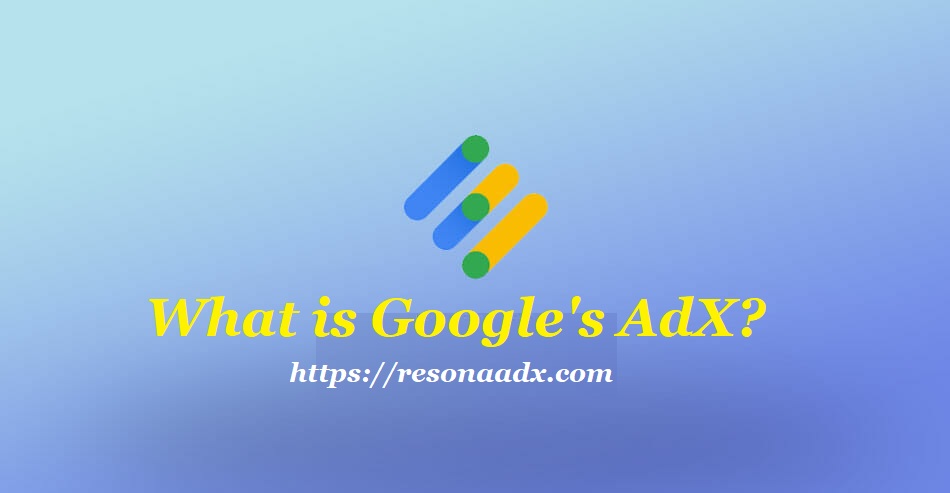What is Google’s AdX?
Google Ad Exchange (AdX), formerly known as DoubleClick Ad Exchange, is an advertising marketplace and programmatic advertising platform operated by Google. It enables advertisers and publishers to buy and sell digital advertising space in real-time auctions. AdX is designed to streamline the process of ad inventory trading, increase ad revenue for publishers, and provide advertisers with access to premium ad placements across a wide range of websites and applications.
Key features and functions of Google’s AdX include:
- Real-Time Bidding (RTB): AdX uses real-time bidding technology to auction ad impressions in milliseconds. Advertisers can bid on ad space based on their targeting criteria, and the winning bid is displayed to the user.
- Ad Formats: AdX supports various ad formats, including display ads, video ads, native ads, and mobile ads. This versatility allows publishers to monetize their inventory across different platforms and devices.
- Header Bidding: AdX facilitates header bidding, a technology that allows publishers to offer their ad inventory to multiple ad exchanges simultaneously, maximizing their revenue potential.
- Audience Targeting: Advertisers can use AdX to target specific audiences based on demographics, interests, and browsing behavior, ensuring that their ads reach the right users.
- Access to Premium Inventory: AdX offers access to high-quality ad inventory on websites and apps that are part of the Google Display Network, as well as partner websites and apps.
- Ad Quality and Brand Safety: AdX includes features to monitor ad quality and ensure brand safety. This helps in preventing the display of inappropriate or low-quality ads.
- Auction Insights: AdX provides insights and data to help publishers and advertisers make informed decisions about their ad strategies. This includes bid performance, audience analytics, and more.
- Dynamic Allocation: For publishers using Google Ad Manager (formerly DoubleClick for Publishers), AdX can be used in conjunction with dynamic allocation to optimize ad revenue and ensure that the highest-yielding ads are displayed.
- Cross-Platform Reach: AdX extends ad reach across various platforms, including desktop, mobile, and video, enabling a broader audience reach for advertisers.
- Programmatic Guaranteed: AdX also supports programmatic guaranteed deals, allowing advertisers to reserve premium ad inventory directly from publishers.
Google Ad Exchange plays a significant role in the programmatic advertising ecosystem, connecting advertisers looking to display their ads with publishers seeking to monetize their digital properties. It’s commonly used by digital marketers, agencies, and publishers to efficiently trade ad inventory and maximize advertising revenue.
What is Google AdX partner?
Google AdX partners are digital advertising entities, such as ad networks and intermediaries, that have established a business relationship with Google Ad Exchange (AdX) to access and participate in AdX’s real-time auctions. AdX partners can act as intermediaries between advertisers and publishers, helping to facilitate the buying and selling of digital ad inventory on the AdX platform.
Here are some key points about Google AdX partners:
- Authorized Intermediaries: AdX partners are authorized intermediaries in the programmatic advertising ecosystem. They connect advertisers (demand) with publishers (supply) in real-time auctions.
- Access to AdX Inventory: AdX partners gain access to the premium ad inventory available on the AdX platform, which includes a wide range of websites, mobile apps, and other digital properties.
- Ad Network Functionality: Many AdX partners operate as ad networks or supply-side platforms (SSPs). They can aggregate ad inventory from various publishers and offer it to advertisers for targeting and bidding.
- Header Bidding Integration: AdX partners often integrate with header bidding solutions, allowing publishers to maximize their ad revenue by offering their inventory to multiple ad exchanges simultaneously.
- Monetization Services: AdX partners can provide publishers with monetization services, helping them optimize ad placements, set pricing rules, and manage their ad inventory effectively.
- Bid Management: For advertisers, AdX partners offer tools and services to manage and optimize their real-time bidding strategies, targeting options, and ad campaigns.
- Data and Analytics: AdX partners often provide data and analytics services to help both publishers and advertisers make informed decisions about their advertising strategies.
- Compliance and Brand Safety: AdX partners may implement measures to ensure compliance with ad quality standards and brand safety guidelines. This helps in maintaining a secure and reputable advertising environment.
- Payment and Settlement: AdX partners handle payment and settlement processes between advertisers and publishers, ensuring that revenue is distributed correctly and on time.
- Technical Integration: AdX partners typically require technical integration with the AdX platform to facilitate the exchange of bid requests and responses, as well as the delivery of ads.
It’s important for both advertisers and publishers to choose AdX partners that align with their specific needs and goals. These partnerships can enhance the efficiency and effectiveness of programmatic advertising campaigns, whether you are looking to reach a larger audience as an advertiser or maximize ad revenue as a publisher.
How do I access Google AdX?
Accessing Google Ad Exchange (AdX) involves a specific process and typically requires working with authorized intermediaries or using the Google Ad Manager platform. Here’s a general overview of how to access AdX:
- Meet Eligibility Requirements:
- AdX typically caters to larger publishers, including websites, apps, and digital media companies. Meeting eligibility requirements, such as a minimum number of monthly ad impressions and compliance with Google’s policies, is essential.
- Set Up Google Ad Manager:
- To access AdX, you usually need to use Google Ad Manager (formerly known as DoubleClick for Publishers). This is Google’s ad management platform that provides access to AdX and other monetization solutions. You’ll need to create an Ad Manager account.
- Apply for AdX Access:
- Within Google Ad Manager, you can apply for access to AdX by submitting a request to Google. The application process may involve sharing information about your website or app, your monthly ad impressions, and your compliance with Google’s policies.
- Evaluation and Approval:
- Google will evaluate your application to determine whether your website or app meets the criteria for AdX access. This evaluation includes a review of your content and audience.
- Integration and Setup:
- Once your application is approved, you will need to integrate Google Ad Manager into your website or app. This involves placing ad tags, which are snippets of code, in the appropriate locations to start serving ads.
- Start Monetizing:
- With AdX integrated, you can start monetizing your digital properties by participating in real-time auctions for ad inventory. Advertisers can bid on your ad space, and you can optimize your revenue through pricing rules and targeting options.
- Work with Authorized Partners (Optional):
- You can also choose to work with authorized intermediaries, which are AdX partners, to help manage and optimize your ad inventory. These partners can provide additional services and expertise in programmatic advertising.
It’s important to note that AdX access is typically reserved for larger publishers with a substantial online presence. If you are a smaller publisher or just getting started with monetization, you may want to explore other Google advertising products, such as Google AdSense, which is designed for a broader range of publishers.
The exact steps and requirements for accessing AdX may change over time, so it’s essential to refer to Google’s official documentation and guidelines for the most up-to-date information on eligibility and the application process.

